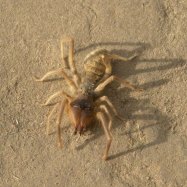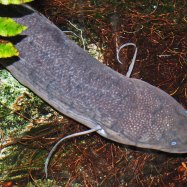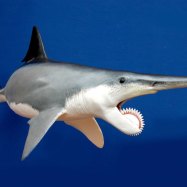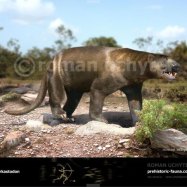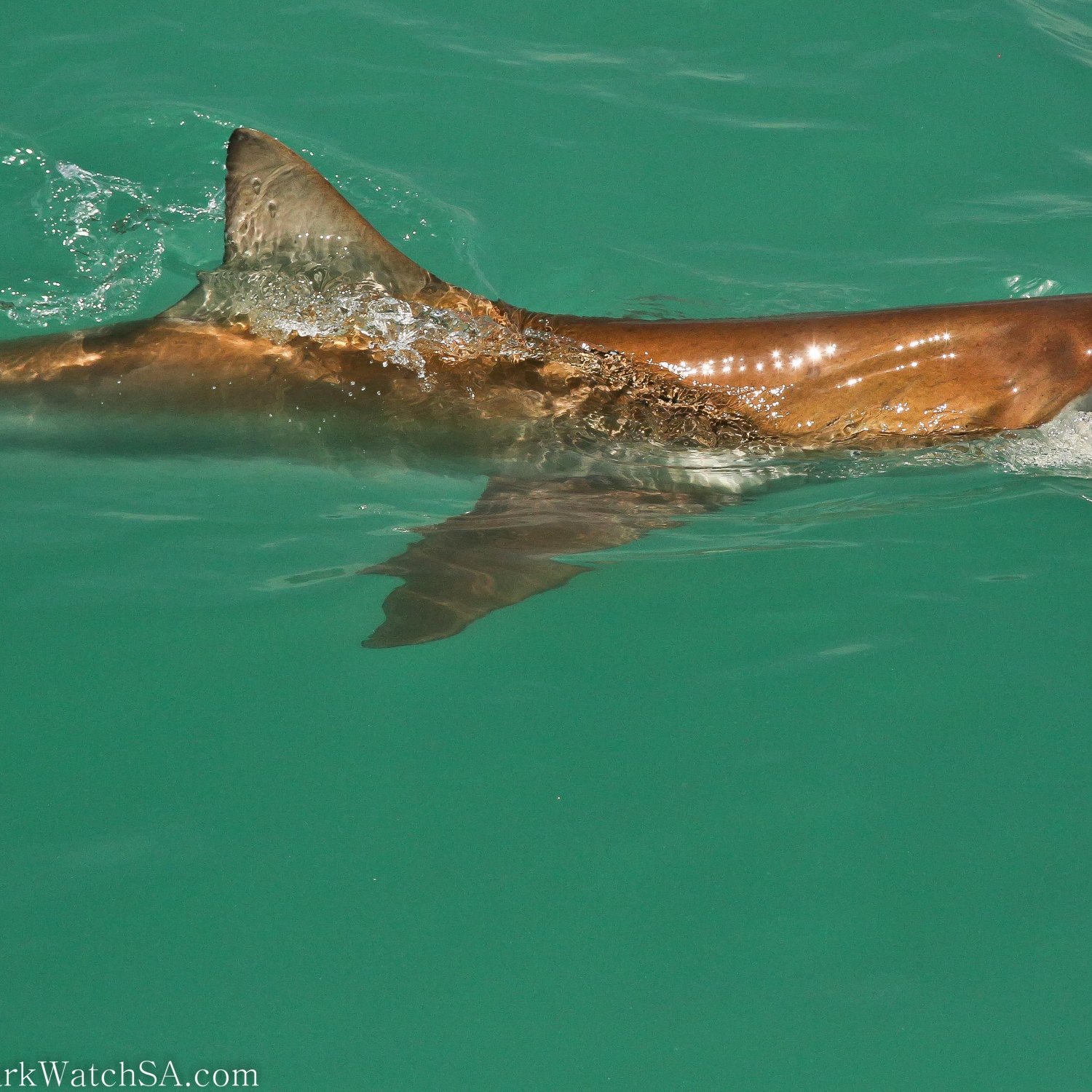
Bronze Whaler Shark
2.5 to 3.5 meters (8 to 11.5 feet)
The Bronze Whaler Shark, also known as the copper shark, is a large and powerful predator found in oceans worldwide. With a slender and streamlined body, it can grow up to 3.5 meters in length and belongs to the Carcharhinidae family. Despite its intimidating appearance, this animal is not known to attack humans. Instead, it feeds on various marine species, making it an important part of the ocean's ecosystem. Keep an eye out for this fascinating creature on your next beach vacation!
Animal Details Summary:
Common Name: Bronze Whaler Shark
Kingdom: Animalia
Habitat: Coastal and offshore waters
The Mighty Bronze Whaler Shark: A True Apex Predator of the Ocean
When we think of sharks, the first image that comes to mind is likely that of a great white shark – a massive and fierce predator gliding effortlessly through the deep blue waters. However, there is another shark species that deserves just as much attention and admiration - the Bronze Whaler Shark, also known as the Carcharhinus brachyurus.The Bronze Whaler Shark may not be as popular or well-known as its more famous counterparts, but it is just as fascinating and formidable. Found in coastal and offshore waters around the world, this shark is a true apex predator with a unique set of characteristics that allow it to thrive in its marine environment Bronze Whaler Shark. So let's dive deeper into the world of the Bronze Whaler Shark and discover what makes this creature truly remarkable.
The Basics: Taxonomy and Habitat
The Bronze Whaler Shark is scientifically categorized under the Kingdom Animalia, Phylum Chordata, and Class Chondrichthyes, which includes all cartilaginous fish like sharks, rays, and skates. Within this class, the Bronze Whaler Shark belongs to the Order Carcharhiniformes and the Family Carcharhinidae, which makes it a close cousin to popular species like the Bull Shark, Hammerhead Shark, and Blacktip Shark.
When it comes to its natural habitat, the Bronze Whaler Shark is primarily found in coastal and offshore waters, making its home in tropical and temperate regions around the world. However, it has a particular preference for southern hemisphere waters, which is why it is more commonly found in countries like Australia, New Zealand, and South Africa.
A Predatory Lifestyle
As a carnivorous shark species, the Bronze Whaler Shark relies on its predatory skills to hunt for food. With a sleek and streamlined body shape, it is built for quick and agile movements in the water, enabling it to chase down its prey with ease. Its sharp teeth and powerful jaws allow it to tear through its victims with efficiency, making it a formidable and efficient hunter.
One of the most intriguing hunting behaviors of the Bronze Whaler Shark is its tendency to form large groups while preying on schools of fish Brown Dog Tick. This strategy is known as cooperative hunting, and it allows the sharks to work together and corner their prey, vastly increasing their chances of success. It is a remarkable display of intelligence and coordination, highlighting how these creatures have adapted to work as a team.
A Stunning Appearance
The Bronze Whaler Shark may not have the dazzling and intimidating appearance of a great white shark, but it is no less striking in its own way. Its name comes from the unique coloration of its body, which is bronze or grayish on the upper side and white or pale on the underside. This coloration serves as camouflage, allowing the shark to blend in with the sandy ocean floor and sneak up on prey without being detected.
But its appearance is more than just for camouflage; it also serves as a means of defense. Contrasting colors on its body act as a warning to potential predators, letting them know that this shark is not to be messed with lightly. It is an important survival tactic that has allowed the Bronze Whaler Shark to thrive in the ocean for millions of years.
Size and Length
The Bronze Whaler Shark may not be as large as some other shark species, but it is still a noticeable and formidable creature in the water. An adult Bronze Whaler Shark can grow to be anywhere between 2.5 to 3.5 meters (8 to 11.5 feet) in length, with the females typically being larger than males. Its slender and streamlined body shapes may not look as intimidating as some other sharks, but make no mistake - this species is still a fierce and powerful predator.
A Vital Role in the Ecosystem
As with any top predator in an ecosystem, the Bronze Whaler Shark plays an essential role in maintaining balance and harmony in the ocean. By preying on smaller fish and other marine creatures, it controls their populations, preventing them from becoming too abundant and disrupting the natural food chain. Additionally, the Bronze Whaler Shark also scavenges on dead and decaying animals, helping to clean up the ocean floor and maintaining the overall health of the marine environment.
Conservation Concerns
Despite being a vital part of the ecosystem, the Bronze Whaler Shark faces severe conservation concerns due to the commercial fishing industry. The shark's meat is considered a delicacy in many parts of the world, and the demand for its fins, used in traditional Asian medicines, has led to a significant decline in their population. Along with accidental trapping in fishing gear, this has resulted in the International Union for Conservation of Nature (IUCN) listing the species as Near Threatened. It is up to us to advocate for better conservation practices and protect these magnificent creatures from further decline.
In Conclusion
The Bronze Whaler Shark may not have the same reputation as the more famous sharks, but it is no less impressive or intimidating in its own right. As a top predator with unique characteristics and hunting behaviors, this shark plays an essential role in the ocean's delicate ecosystem. And, with its stunning coloration and sleek body, it is undoubtedly a fascinating and majestic animal to behold. So the next time you hear about sharks, don't forget to give a nod to the mighty Bronze Whaler Shark, who is truly deserving of our attention and admiration.

Bronze Whaler Shark
Animal Details Bronze Whaler Shark - Scientific Name: Carcharhinus brachyurus
- Category: Animals B
- Scientific Name: Carcharhinus brachyurus
- Common Name: Bronze Whaler Shark
- Kingdom: Animalia
- Phylum: Chordata
- Class: Chondrichthyes
- Order: Carcharhiniformes
- Family: Carcharhinidae
- Habitat: Coastal and offshore waters
- Feeding Method: Carnivorous
- Geographical Distribution: Tropical and temperate waters worldwide
- Country of Origin: Australia, New Zealand, South Africa
- Location: Oceans
- Animal Coloration: Bronze or grayish upper body, white or pale underside
- Body Shape: Slender and streamlined
- Length: 2.5 to 3.5 meters (8 to 11.5 feet)
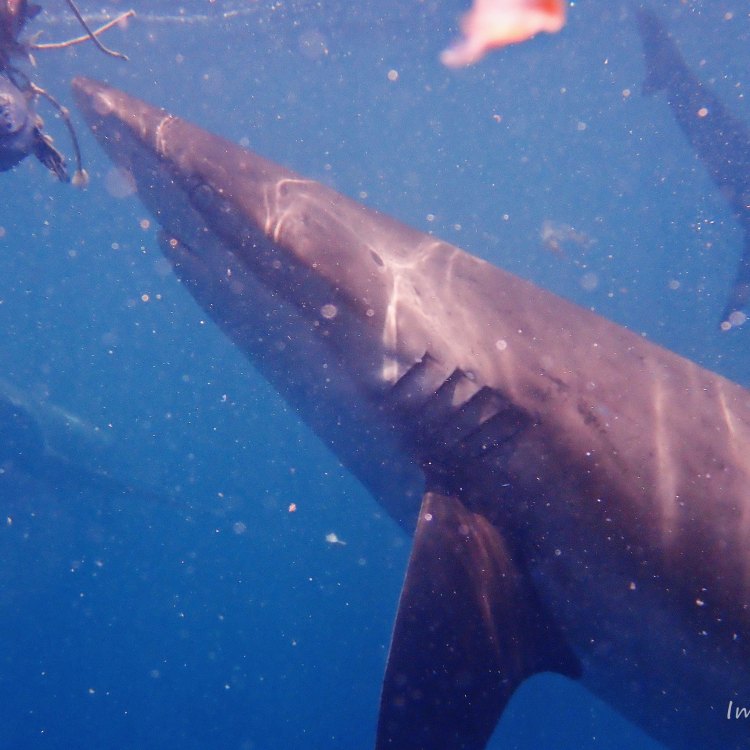
Bronze Whaler Shark
- Adult Size: Up to 3.5 meters (11.5 feet)
- Average Lifespan: Up to 25 years
- Reproduction: Ovoviviparous
- Reproductive Behavior: Mating occurs in coastal waters
- Sound or Call: No specific sound or call
- Migration Pattern: Seasonal migrations between feeding and breeding grounds
- Social Groups: Solitary or in small groups
- Behavior: Active and fast-swimming
- Threats: Overfishing, habitat destruction, accidental capture in fishing gear
- Conservation Status: Near Threatened
- Impact on Ecosystem: Plays an important role in the marine food chain
- Human Use: Commercial fishing for its meat, fins, and liver oil
- Distinctive Features: Long, slender body with a pointed snout and large pectoral fins
- Interesting Facts: 1. Also known as copper sharks. 2. They are opportunistic feeders, feeding on a variety of fish, squid, and small sharks. 3. Bronze Whaler Sharks are known for their strong and powerful swimming abilities. 4. They are often found close to the shore, making them a potentially dangerous species to humans. 5. Bronze whaler sharks have been recorded to migrate hundreds of miles in search of food and suitable breeding grounds.
- Predator: Not specified
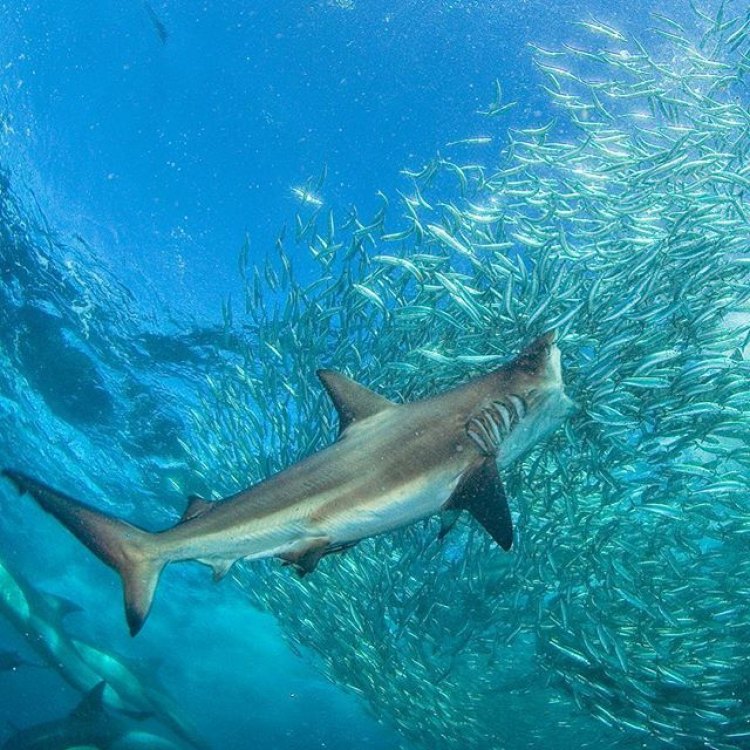
Carcharhinus brachyurus
The Bronze Whaler Shark: An Underestimated and Fascinating Species
The ocean is home to a vast array of creatures, many of which remain shrouded in mystery. Among these creatures is the Bronze Whaler Shark (Carcharhinus brachyurus), also known as the copper shark. This magnificent predator is found in the coastal waters of the world's oceans, yet it remains relatively unknown to most people. In this article, we will delve into the unique features and behaviors of the Bronze Whaler Shark, shedding light on this enigmatic species PeaceOfAnimals.Com.Adult Bronze Whaler Sharks can reach an impressive size of up to 3.5 meters (11.5 feet) and can live up to 25 years in the wild. They are classified as near threatened on the International Union for Conservation of Nature (IUCN) Red List, facing threats such as overfishing, habitat destruction, and accidental capture in fishing gear. Despite these threats, the Bronze Whaler Shark plays an essential role in the marine ecosystem, and its conservation is vital for the health of our oceans.
Reproduction in Bronze Whaler Sharks is ovoviviparous, meaning the embryos develop inside eggs that remain within the mother's body until they hatch. This reproductive strategy allows the mother to provide protection and nourishment to her offspring, increasing their chance of survival. Mating occurs in coastal waters, and the female gives birth to live young in the same area. This behavior is not only fascinating but also crucial for the species' survival since it ensures the continuity of its population Basilisk Lizard.
Bronze Whaler Sharks are solitary or can be observed in small groups, although they have been known to gather in larger schools during feeding events. These active and fast-swimming sharks are opportunistic feeders, meaning they prey on various animals, depending on what is available in their environment. Their diet includes fish, squid, and even small sharks, which they catch with their sharp teeth and powerful jaws. This diverse diet allows the Bronze Whaler Shark to adapt to different marine habitats and increases its chances of survival.
One of the most distinctive features of the Bronze Whaler Shark is its long, slender body with a pointed snout and large pectoral fins. These fins are essential for the shark's propulsion, and they allow it to swim at high speeds. The Bronze Whaler Shark is known for its powerful swimming abilities, and it has been recorded to migrate hundreds of miles in search of food and suitable breeding grounds. This migration pattern is essential for maintaining a healthy and genetically diverse population.
While the Bronze Whaler Shark is not considered a significant threat to humans, it has been involved in several attacks on humans. One factor that contributes to these incidents is the shark's preference for coastal habitats, often found close to shore. Furthermore, its powerful swimming abilities and opportunistic feeding behavior make it an efficient predator, raising concerns for public safety. However, it's worth noting that these attacks are rare, and humans are not their primary prey.
Despite being a relatively unknown species, the Bronze Whaler Shark is intricately linked to the marine food chain. As top predators, they help regulate the population of their prey, preventing one species from becoming dominant and maintaining balance in the ecosystem. Any decline in the population of Bronze Whaler Sharks could have disastrous effects on the marine environment, causing a cascade of ecological imbalances.
Apart from its ecological significance, the Bronze Whaler Shark has also been a subject of commercial use. Its meat, fins, and liver oil have been harvested for various purposes, such as food, dietary supplements, and cosmetics. This commercial fishing has contributed to a decline in their population, and measures must be taken to ensure sustainable and responsible fishing practices to protect this species.
One interesting fact about the Bronze Whaler Shark is its alternative name, copper shark. This name is derived from the shark's color, which ranges from a dark bronze to a golden copper hue on its upper body. Its belly is typically white, making it challenging to spot from below for potential prey. This camouflaging coloration, combined with its powerful swimming abilities, allows the Bronze Whaler Shark to surprise its prey and quickly catch it.
In conclusion, the Bronze Whaler Shark is a unique and fascinating species that deserves more attention and conservation efforts. Its distinctive features, reproductive behaviors, and crucial role in the marine ecosystem make it a crucial species to protect. With overfishing, habitat destruction, and accidental capture posing threats to this species, it's essential to raise awareness and promote responsible conservation practices to ensure the survival of this magnificent creature. Let's appreciate and protect the Bronze Whaler Shark for the crucial part it plays in the ocean's complex and delicate balance.
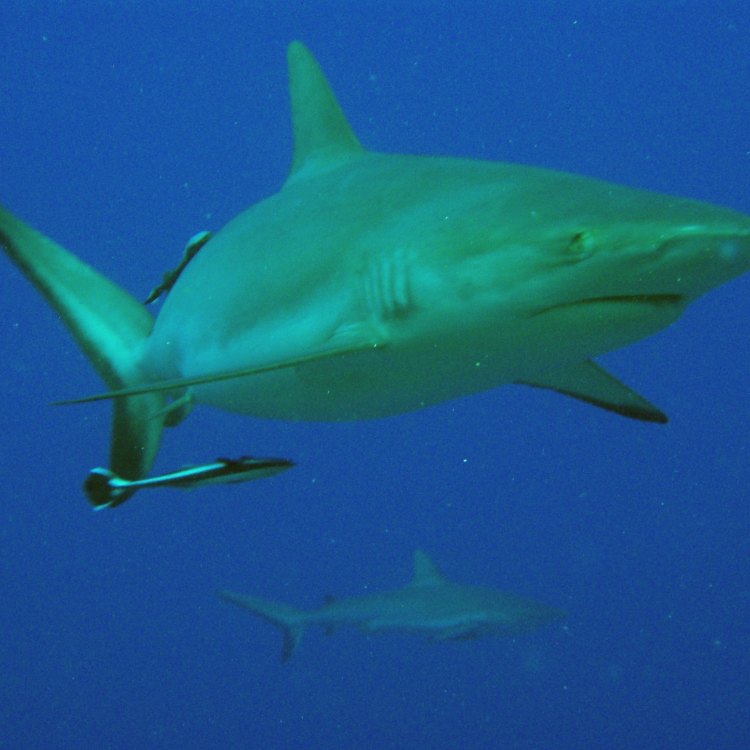
The Mighty Bronze Whaler Shark: A True Apex Predator of the Ocean
Disclaimer: The content provided is for informational purposes only. We cannot guarantee the accuracy of the information on this page 100%. All information provided here may change without prior notice.


